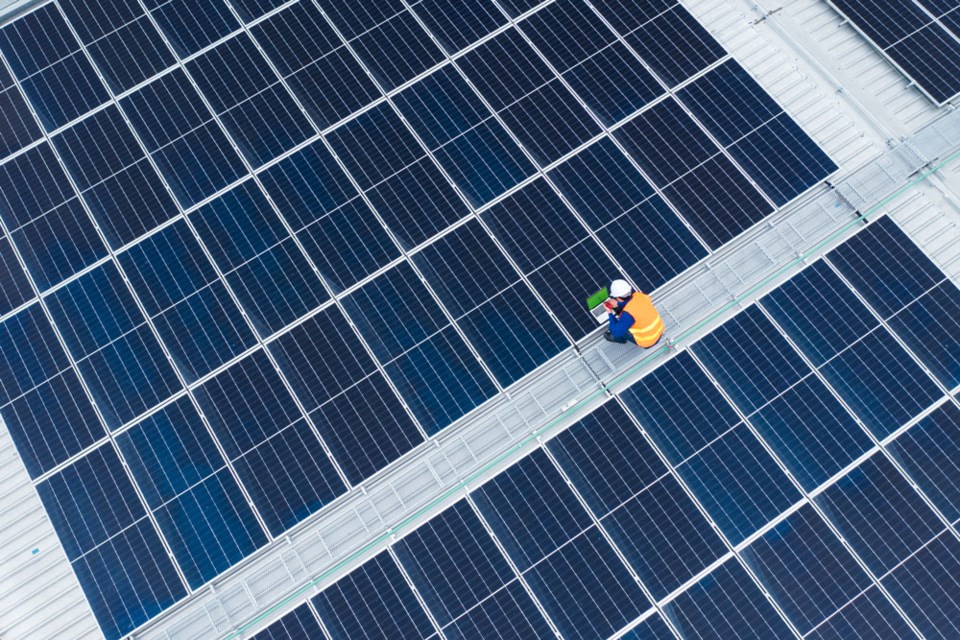ESTEVAN - Saskatchewan’s largest solar-powered facility is expected to eventually be in the Estevan area.
SaskPower announced on April 27 it will be launching a competition in the coming weeks to find a vendor to build the facility.
Estevan was chosen due to its abundance of sunny days, its proximity to suitable transmission infrastructure and the relatively flat neighbouring landscape. Don Morgan, the minister responsible for SaskPower, said SaskPower also considered the lack of wind power generation in the Estevan area.
“We have a really good grid going through there because of the other generating facilities that we have there, the coal facilities and hydro. So it fits in well with our grid,” said Morgan. “We also knew that we have a really good workforce in there with people that are working on other energy projects already.”
At 100 megawatts, this facility will be 10 times the capacity of Saskatchewan’s current largest solar facility and will be able to provide power for up to 25,000 homes.
A specific location around Estevan has not been determined for the generating site. Morgan said there will be a request for proposals for the Estevan area.
Among the factors they will consider is the infrastructure needed to the plant to the grid and the availability of land.
Constructing the facility on land adjacent to Boundary Dam or Shand Power Stations would be a possibility, he said.
“It will use that much more land. It has to interconnect between the different pieces of the solar panel, and then interconnect into our existing grid. So those are all issues that will have to be addressed as they come forward.”
The competition to determine the proponent is expected to start in the near future, Morgan said.
“With any source of energy, you look to other energy producers,” said Morgan. “What is there available? Is someone doing something with hydro? Is someone doing something with wind? This is when we look to the private sector to be providing it, but we look at whatever competition there might be from other sources of energy.”
SaskPower hopes the Estevan solar power site will be operating by early 2026, but the timeline will be determined after the proponent is selected.
The utility also doesn’t have a projection for how much the venture will cost. SaskPower is looking for some significant Indigenous involvement from equity, job and operational points of view.
He noted that solar and wind power have seen their costs drop over time.
Morgan expects the construction process will employ about 100 people. Once it is built and operational, the number of employees will be relatively low.
“There will be people doing maintenance, cleaning panels and stuff like that. So there will be a number of them (employees), but it will depend on what the proponent comes forward with. There will certainly be far more during the construction of the facility as they build whatever framework has been to be built, on a stable framework, and then they interconnect.”
Solar panels do not have any moving parts, unlike the Boundary Dam Power Station or a wind turbine. They all have turbines that are turning and generate lots of heat, so they require constant maintenance and attention.
“With this one, the sun hits out, electricity comes out,” said Morgan.
Maintenance and control will make sure it operates and fits in well with the grid system.
“When you look at ones like wind or solar, they will require more attention to maintain on the grid, because as the sun goes behind clouds, the output drops off. Same with wind. The wind drops off, no output.
“So you have people to manage how they fit into the grid, how you adjust other things, up or down, as they are operating.”
The announcement has led to further speculation about the future of Boundary Dam and Shand, and the potential for retrofitting Shand and Unit 6 at Boundary Dam with CCS technology. Morgan said SaskPower has yet to make a decision on the future of those two units.
“We were a leader with Boundary Dam [Unit] 3 … since it came online. It certainly had some growing pains. But at the present time, it’s operating well, it’s doing what it’s supposed to do.”
Morgan said current federal regulations will not provide any funding, support or licensing for anything further that involves coal or advanced coal alternatives.
There is room for solar and wind, he said, but expanded CCS will be up to the federal government. Morgan has invited the federal government to tour the CCS facility at Boundary Dam, and SaskPower is continuing to negotiate with the federal government. For the next 20-30 years, Morgan said it would be beneficial to allow for additional use of CCS in coal-fired generation.




